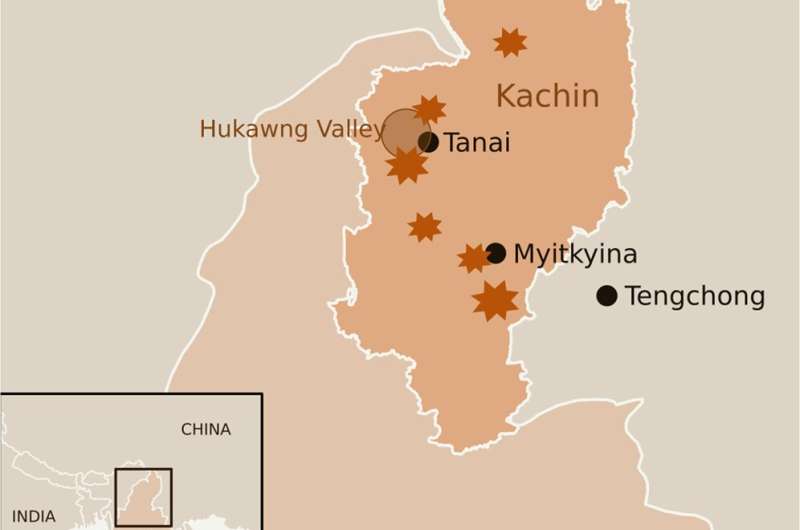Analysis of research on Myanmar amber fossils shows explicit links to political, legal and economic changes

Myanmar, a country in Southeast Asia, is plagued by political and economic crises. The fall of a president, a military putsch and the crackdown on religious minorities have had an impact not only on life but also on research in the country. One area of research that has been particularly affected is research into fossils preserved in amber.
Researchers at Friedrich-Alexander-Universität Erlangen-Nürnberg (FAU) have conducted a case study proving the negative impact political conflicts have on research. They examined scientific publications from the last three decades describing fossils in amber from Myanmar. Their results indicate that the increased research interest in Myanmar amber is explicitly linked to major political, legal and economic changes. The results were published in the journal Communications Biology.
Myanmar is dominated by political and economic crises, and reports show a connection between amber mining and the ongoing humanitarian crisis in the north of the country. The unrelenting conflict between the Kachin Independence Army (KIA) and the Myanmar military forces has a direct impact on the life of the civilian population and on research. Certain areas of research have been particularly affected, including research into amber fossils.
Amber from Myanmar contains remnants of forest ecosystems from the mid Cretaceous, the same ecosystem in which the dinosaurs lived. In order to gain a better understanding of the affects on research into amber fossils from Myanmar, researchers from FAU have analyzed academic publications describing fossils in Myanmar amber from 1990 to 2021.
Gemstones in crisis
Their findings reveal that the increasing interest in amber from Myanmar correlates exactly with the ongoing political, legal and economic changes within the country and on the international scene. Demand for amber has increased rapidly since 2010 and mining in the northern region of Kachin has been extended. The armed conflict has led to amber mines becoming sites for human rights violations, and the local population has been forced to leave their homes.
Furthermore, the analysis shows that researchers from Myanmar are largely excluded from conducting research into the amber from their own country. Amber fossils fetch a high price. As a result, amber tends to be sold abroad and made available for researchers based outside Myanmar. The strict restrictions within the country mean that researchers have scarcely any opportunity to acquire amber for research purposes.
The case study makes it clear that systemic changes and a greater awareness of unfair research practices in the paleontological community and in wider academic circles are urgently required in order to curb exploitative and illegal practices in paleontology.
More information: Emma M. Dunne et al, Ethics, law, and politics in palaeontological research: The case of Myanmar amber, Communications Biology (2022). DOI: 10.1038/s42003-022-03847-2
Journal information: Communications Biology
Provided by Friedrich–Alexander University Erlangen–Nurnberg





















